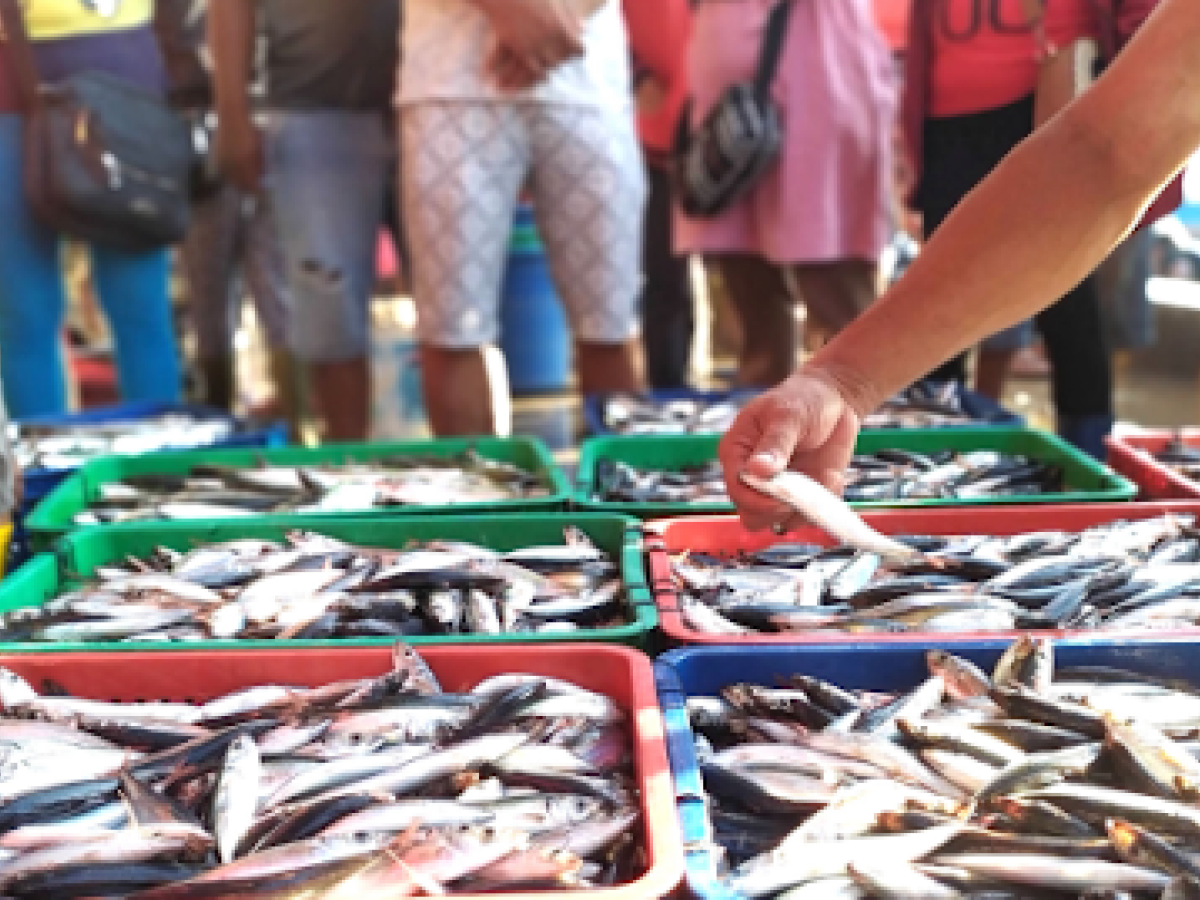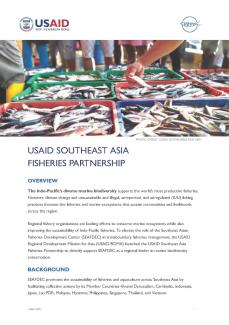OVERVIEW
The Indo-Pacific’s diverse marine biodiversity supports the world’s most productive fisheries. However, climate change and unsustainable and illegal, unreported, and unregulated (IUU) fishing practices threaten the fisheries and marine ecosystems that sustain communities and livelihoods across the region.
Regional fishery organizations are leading efforts to conserve marine ecosystems while also improving the sustainability of Indo-Pacific fisheries. To elevate the role of the Southeast Asian Fisheries Development Center (SEAFDEC) in transboundary fisheries management, the USAID Regional Development Mission for Asia (USAID/RDMA) launched the USAID Southeast Asia Fisheries Partnership to directly support SEAFDEC as a regional leader in marine biodiversity conservation.
BACKGROUND
SEAFDEC promotes the sustainability of fisheries and aquaculture across Southeast Asia by facilitating collective actions by its Member Countries–Brunei Darussalam, Cambodia, Indonesia, Japan, Lao PDR, Malaysia, Myanmar, Philippines, Singapore, Thailand, and Vietnam.
SEAFDEC and USAID’s collaboration began in 2015 under USAID Oceans and Fisheries Partnership, which promoted the development and adoption of an electronic seafood traceability system among national fisheries agencies in Southeast Asia. Through USAID Sustainable Fish Asia, USAID partnered with SEAFDEC to build its institutional capacity to combat IUU fishing by promoting sustainable fisheries practices and management. This local capacity development led to a new direct partnership that was co-created by both organizations to advance shared objectives and elevate SEAFDEC’s role as a regional leader.
The USAID Southeast Asia Fisheries Partnership demonstrates USAID’s commitment to channel a larger portion of funds directly to leading local organizations. As a regional mission, USAID/RDMA works directly with multi-national membership organizations like SEAFDEC because they have the expertise to develop tailored solutions within the unique context of the Indo-Pacific, and the mandate to implement them in support of sustainable transboundary fisheries.
GOALS
The USAID Southeast Asia Fisheries Partnership improves the management of fisheries and aquaculture resources in the Indo-Pacific region by:
- Promoting the adoption and implementation of equitable fishery policies, programs, and plans by national fisheries agencies.
- Promoting the adoption of sustainable fishing and aquaculture practices among commercial and small-scale fishers.
- Increasing technical capacity among national fisheries agencies and fisheries institutions for improved data analysis in inland fisheries, and a stock assessment forecast model.
ANTICIPATED RESULTS
- Improved stock assessments and forecast models for regional fisheries that incorporate climate adaptation considerations.
- New regional and sub-regional platforms for knowledge sharing to guide stronger implementation of fisheries policies, programs, and plans.
- Increased adoption of fishing gear innovations among fishing vessels to reduce the impact of capture fisheries activities on coastal and marine ecosystems. For example, by introducing innovative fishing gears, fishers can protect seafloors and preserve marine habitats.


